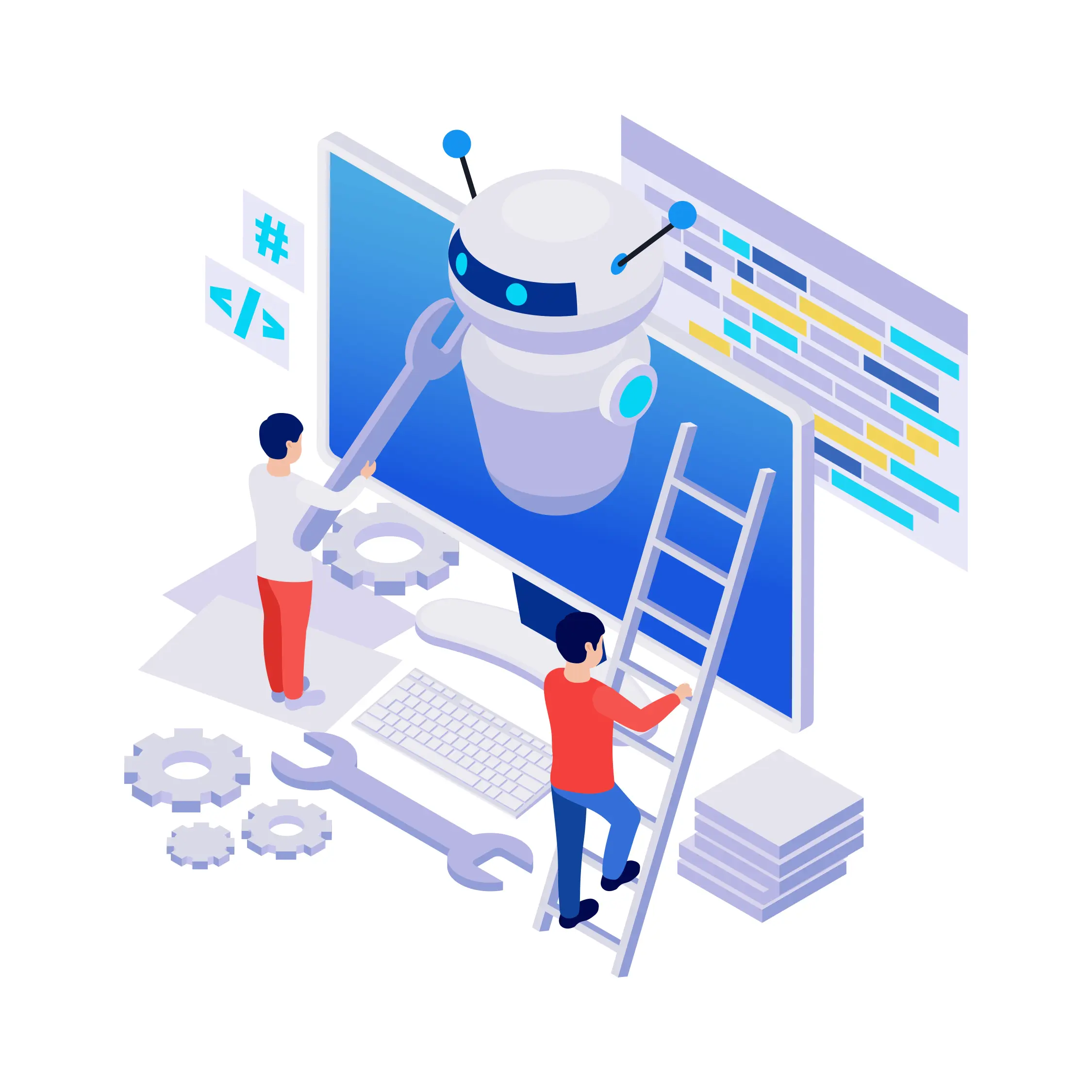Let RPA Technology improve your process too

How can Robotic Process Automation benefit your business?
Robotic Process Automation (RPA) is software that automates tedious, repetitive tasks by replacing rule-based processes.
Simply put, software robots can automatically perform predefined tasks, eliminating the need for manual intervention.
You might wonder:
“What kind of tasks can RPA handle?”
A perfect RPA application example is implementation of automatic data extraction, where retrieved data seamlessly flows into subsequent processes.
Do you frequently copy data manually between different systems? If so, RPA can take over this task efficiently!
At EasyData, we specialize in eliminating unnecessary, error-prone activities by automating complex workflows, ensuring seamless coordination between various processes.
Robotic Process Automation (RPA) in more detail
Looking to cut automation costs? Your organization may be using outdated automation solutions that cause a lot of frustration. If this is the case, RPA can resolve these inefficiencies and optimize business processes for greater efficiency.
It is wonderful to see how RPA takes over screen inputs and autonomously makes precise decisions. That is the added value of RPA that we would like you to experience in practice. Think of software robots as tireless digital assistants capable of making decisions just like a human—without requiring a break.
More than one automated process
RPA is an umbrella term for products that leverage smart technology to automate applications. Essentially, it enables different applications to interact without human intervention! The automated process that ties all applications is called a ‘Robot’. Routine actions are automated, eliminating the need for human interaction by interpreting screen data and executing follow-up tasks. EasyData’s RPA technology seamlessly connects legacy and modern applications while maintaining full traceability of all automated decisions.


Robotic Process Automation makes smarter automation
If your process involves screen data, a software robot can immediately interpret and process it.
Automation begins with simple rules. For example, a postal code field follows a fixed format: 7315BS (four numbers followed by two letters). Software robots can easily recognize such structured data and apply predefined rules to ensure accurate processing.
You can capture all input fields as they are on your screen in rules so that your software robot knows exactly what is expected.
A well-implemented RPA workflow eliminates manual intervention, ensuring error-free operations. At the same time, RPA provides extensive reporting for improved transparency across business processes.
Robotic Process Automation Principles
By reading on-screen data, software robots can interpret and process information according to predefined rules. That’s clarity and consistency in action.
It brings us to an important question:
Does RPA (the software robot) have anything to do with AI (artificial intelligence)?
Robotic Process Automation, learning from your process
The next step in RPA is enabling software robots to make independent decisions. Imagine that a customer placed an order in your webstore for solar panels. The order includes solar panels, an inverter, an electricity meter, and other accessories. However, the customer forgets to add mounting brackets to place the solar panels on the roof.
Wouldn’t it be helpful if the software robot detected this missing item and notified the customer?
The software robot learns
Basically, you do not need Machine Learning if you want to send the customer a message that the mounting brackets for the ordered solar panels are missing. A simple addition to the rule for the software robot as explained in the postcode example is sufficient to catch this part of the missing order.
However, for large-scale operations with thousands of products, Machine Learning (ML) enhances RPA by identifying patterns in customer behavior and recommending solutions based on historical data.
In practice, this means that you train an ML model with as many processed orders as possible to suggest the customer with the best order options or alert them on missing essentials.
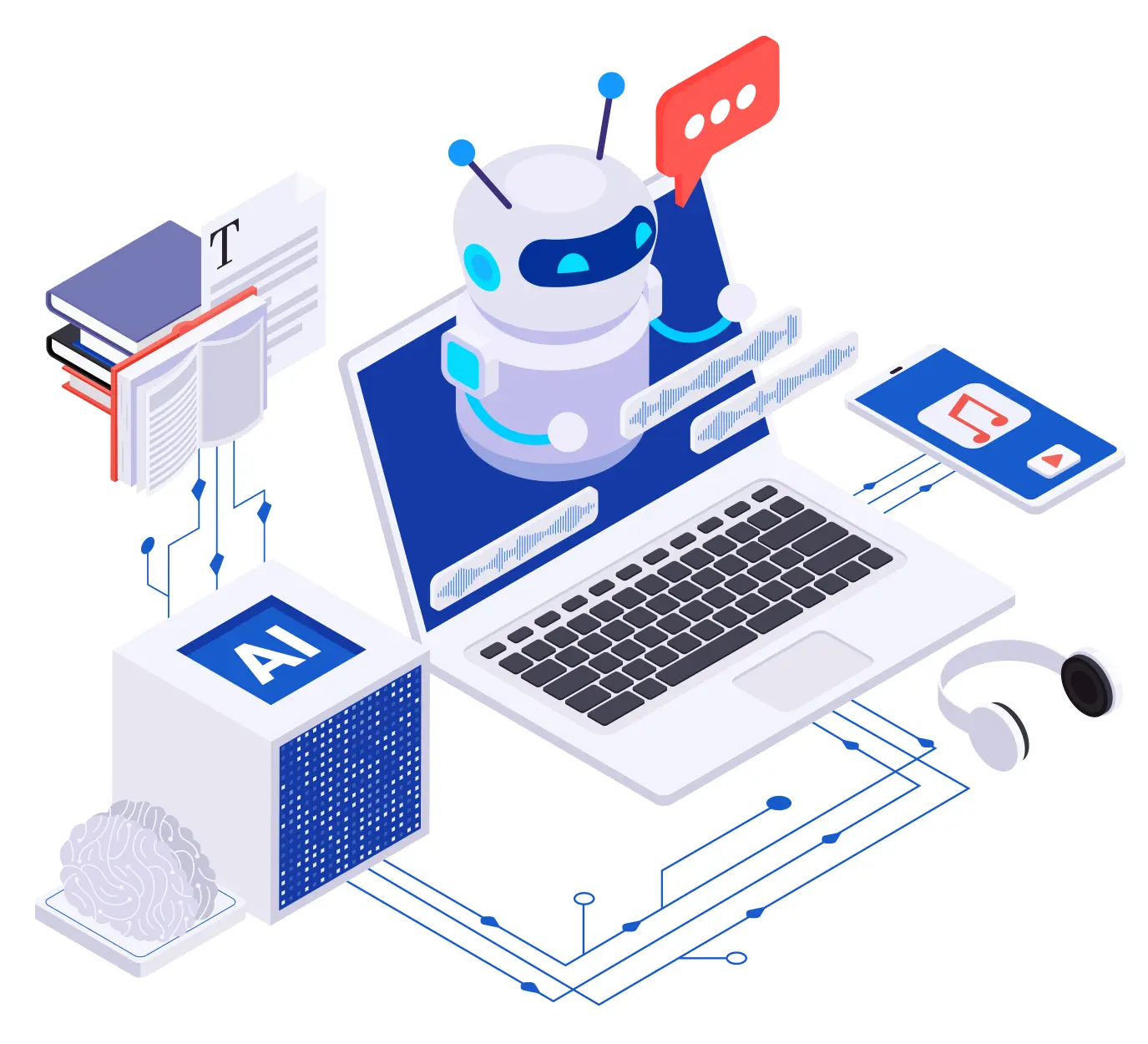

Robotic Process Automation can perform multiple tasks
Let’s get back to the example of solar panels for a moment. Suppose your organization has implemented an ML-powered RPA system for order processing. In this case, your RPA understands how different items in your webstore relate to each other: If you buy product ‘A’, product ‘B’ will most likely be next.
You can also use that knowledge in support or the pre-sales function on your website. If a potential customer asks a question about a certain type of solar panel, the software robot can automatically advise them using the data from the orders it has been trained on.
That is the power of Robotic Process Automation (RPA) in combination with Machine Learning (ML). The software robot interprets data from any source, validates the content and processes the data flawlessly into a pipelined workflow without any human intervention.
A well-implemented RPA workflow ensures flawless execution, detailed reporting, and improved overall transparency in business operations.
Your colleagues and RPA
The adoption of RPA is growing rapidly because it seamlessly integrates into existing workflows thanks to companies such as EasyData. Not many changes for employees, RPA uses the same graphical interface as the employee himself.
Employees are therefore not confronted with changes with the introduction of software robots . With With EasyData’s RPA solutions, automation is driven by triggers—either predefined business rules or data analysis insights. These decision-making rules remain transparent and can be shared with employees if necessary.
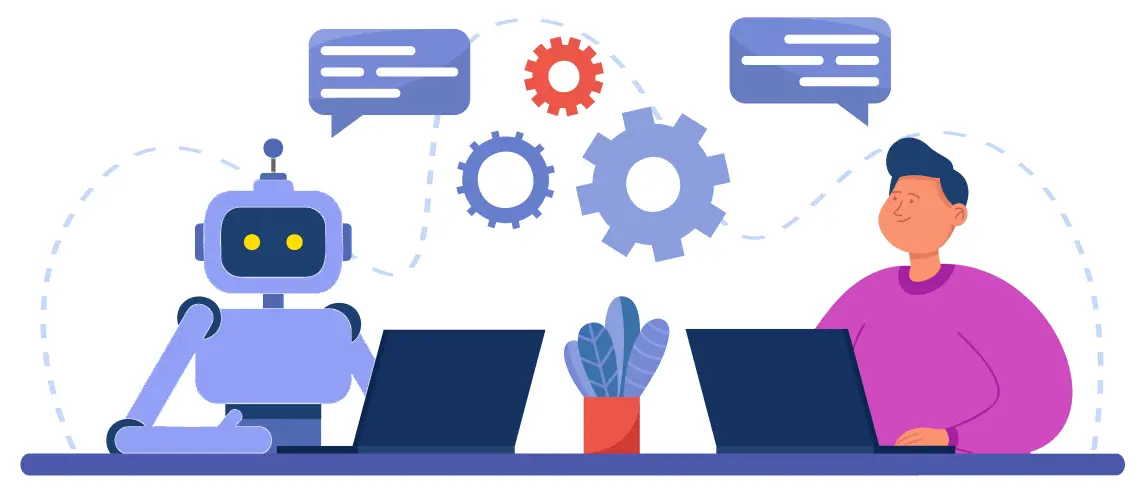

Why would you choose Robotic Process Automation?
Every organization has unique reasons for adopting RPA.
Of course, your vision or strategic requirements might not be covered with the above examples.
That does not mean that we cannot help you, EasyData stands for a personal approach.
In that case, you are cordially invited to contact EasyData RPA specialists.
We will do our best to come up with a tailored solution to meet your specific needs.
RPA is no longer a technology for tomorrow
Strategic RPA applications are all over process architecture schemes of the leading enterprises.
Now is the time to assess your internal processes and identify areas for improvement.
EasyData makes RPA accessible, practical, and cost-effective.
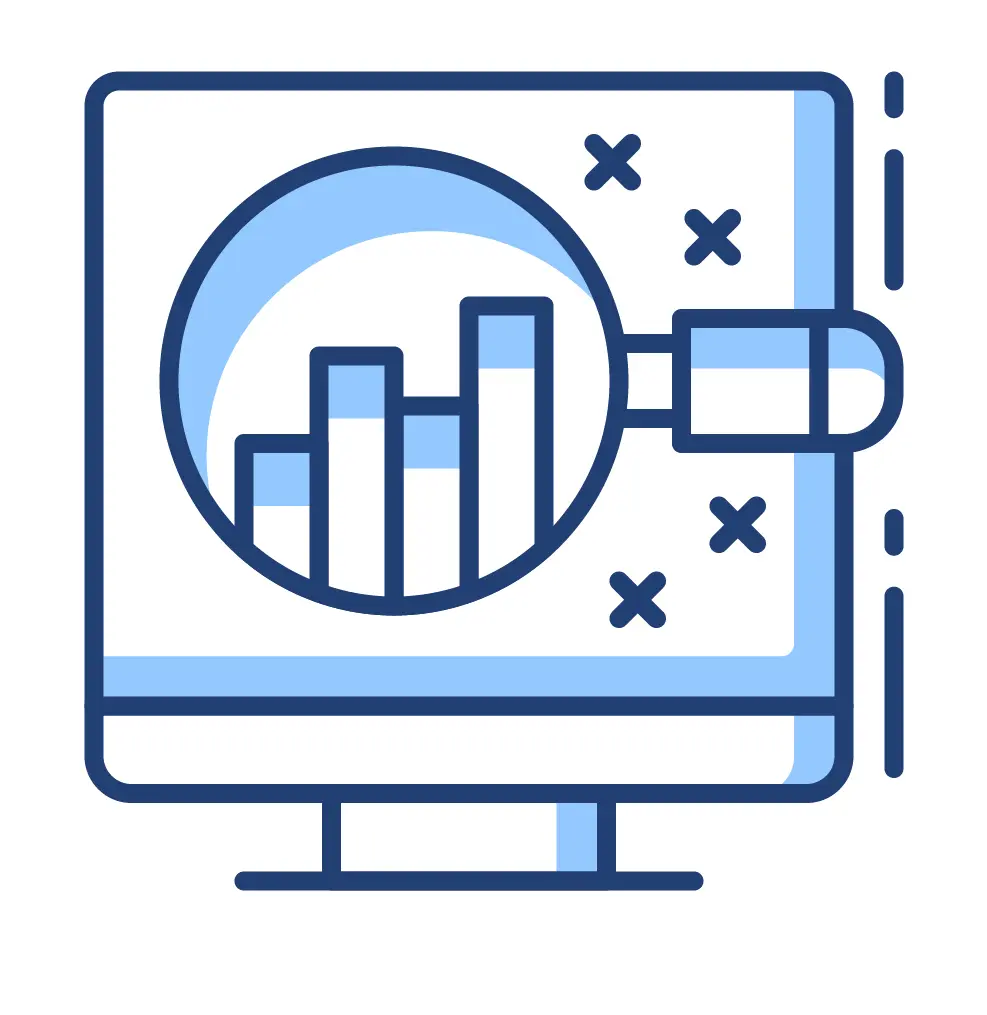






Cost savings
Automating tasks means you and your colleagues have more time for the Business.
Imagine how much energy you have left if your routine actions are done automatically!
Efficiency
RPA removes repetitive work from your process with the greatest possible accuracy.
This way, your operational expenses suddenly disappear, together with an effective lead time.
Time savings
Computers work 24/7, these are processing times desired by every modern organization.
Imagine that tasks are perfectly processed automatically outside regular office hours.
Scalable
RPA is resource-friendly, depending on the work, more or less computing power is used.
Once installed, it is not relevant whether one task or a series of processes is scaled up.
Transparency
RPA from EasyData automatically contributes to compliance with regulations, if applicable.
Is that not relevant? Then you at least have the parameters to visually monitor processes.
Implementation
EasyData implements RPA without changes to your configuration or system structure.
This approach guarantees a cost-effective solution that you can quickly benefit from!
Your colleagues
By transferring repetitive and especially boring tasks that everyone knows to RPA, employees can
concentrate much better on creative and strategic tasks.

What makes EasyData your Robot Automation supplier?
The answer is simple, EasyData has had an innovative lead in process automation projects for about 25 years.
RPA as an essential element in your Business Strategy
RPA is becoming increasingly important in strategic decisions. Automation of manual work processes to an automated self-service system is not about excluding people. RPA Robots are an essential step for economic growth and business development to stay ahead of the competition.

The technology behind RPA
Robotic Process Automation (RPA) involves the art of using smart software to take over repetitive, rule-based tasks.
Initially, we will deal with the automatic input from one system to another in an automated, error-free manner.
Screen capture with RPA
Reading out the User Interface (UI) is the most obvious method for this. Software robots can read the screen independently and interpret the data from the individual fields. In the next step, this data is automatically transferred by the software robot to the subsequent system.
Practical example
Suppose you have a webshop with an online order processing system. You want to transfer those orders 24/7 to your local accounting package without an API connection. In that case, EasyData can transfer the orders from your online system to your local system in a cost-effective manner. RPA can then also automatically print the invoice and register the ordered product to be sent with the selected parcel service.
We add intelligence
Suppose the postcode is not 100% related to the street name. In that case, the inclusion of Levenshtein logic will always ensure that the street name is displayed correctly on the invoice with shipping details.
How great is that?
The customer makes a mistake and the technology corrects this data without any hassle or comment.
RPA Scripting
RPA uses scripting that technically determines the steps in your business process according to fixed program rules. At the level that EasyData looks at this, we can check the data that is automatically read in a received email, for example. Such a check does not stand alone, the extracted data can be compared with external sources, for example. First, think of the postcode and street name match. Another obvious example is the normalization of dates. Everyone formulates their date note in their way. A simple normalization rule for us then ensures that the same date format is always used internally.
Do RPA bots make decisions?
No, RPA software robots work exclusively because of pre-set program code. The RPA technique as provided by EasyData can only take actions that meet added program rules. These conditions are programmed into the RPA script. RPA therefore has no intelligence or any understanding of the processes. RPA takes over repetitive tasks from people based on pre-defined rules.
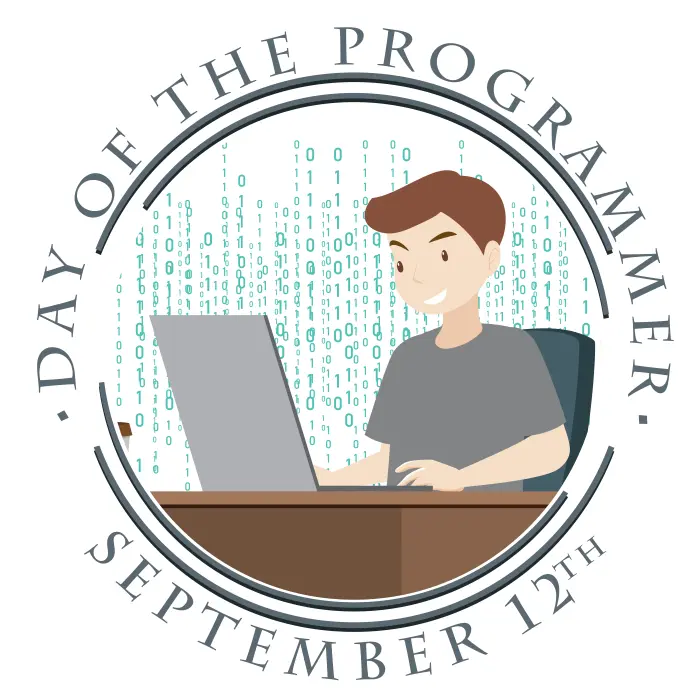

The different forms of Robotic Process Automation as we know
RPA has different manifestations. EasyData makes the assessment of which RPA form best suits your organization or business process, based on your situation. This choice naturally depends on your technical preferences and budget. To make this clear, we have briefly and concisely described the different RPA manifestations below.
Robotic Process Automation support
The most important goal when applying RPA, implemented on the employee’s desktop, is that the RPA technology takes over tasks from the employee. The result is increasing productivity at the employee level. That is actually the most significant form that has been discussed in this article so far.
Robotic Process Automation in your organisation
In this situation, the software robot is deployed from a central server, from which it performs tasks. These performed actions are then recorded in a database. With Process RPA, organizations can use RPA to automate end-to-end tasks. Likewise, workflows and current statuses can be visually checked from a central console.
Autonomous Robotic Process Automation
Autonomous RPA is built on process RPA solutions and can handle more complex, rule-based processes through built-in decisions. When you think of decisions, think of handling priority changes to achieve more dynamic workload distribution. This article will give you some extra insights on the subject.
Cognitive Robotic Process Automation
(Robotic Process Automation) refers to the use of RPA in combination with cognitive technologies, such as Artificial Intelligence (AI), Machine Learning (ML), Natural Language Processing (NLP), and Computer Vision. Unlike traditional RPA, which is primarily focused on repetitive, rule-based tasks, cognitive RPA enables robots to perform more advanced tasks that require intelligence and understanding of unstructured data.
The security of your process
The proposed Software Robots are often subject to security requirements. This can easily be arranged with software, you can ensure that all actions performed are recorded in a database, for example. In such a case, we also ensure that the environment in which the RPA device operates is set up by the current CIS guidelines. If this concerns a lot of separate data, it is useful to make this visually visible via a Grafana dashboard, for example. With such a dashboard, you can gain insights within your organization that you would not easily obtain in any other way.
Compliance in Robotic Process Automation
Useful for tasks that concern personal data in the context of the GDPR. Of course, there is more than that. RPA is not the exclusive domain of office automation, you can also encounter RPA on the work floor. With the same ease with which an order form is automatically printed, a valve for administering a specific ingredient can also be operated. Suppose the proposed recipe does not produce the desired end product, then it is practical that at least the automatically performed actions can be traced exactly.


Why choose EasyData?
Our RPA foundation largely stems from Data Capture assignments, where our “first generation RPA tools” were successfully applied around 1999. At that time, we worked with an early version of EasySeparate and collaborated with AutoIT. Both platforms have developed in their unique way. EasySeparate can now perform RPA tasks fairly autonomously. In addition, we use current market leaders such as UIPath, Blue Prism and Automation Anywhere. If clients want to use Open-Source technology, the alternative Open RPA can be a good choice in addition to AutoIT.
Robotic Process Automation in summary
The technical approach to RPA differs somewhat between different suppliers and tools, but these general principles generally remain applicable. The ultimate goal is to reduce human involvement in repetitive and time-consuming tasks, allowing employees to focus on more strategic and creative aspects of their work. EasyData has built up knowledge in this area over the past 25 years and a mixed team of Senior and medium programmers is ready to tackle your process automation issue!

